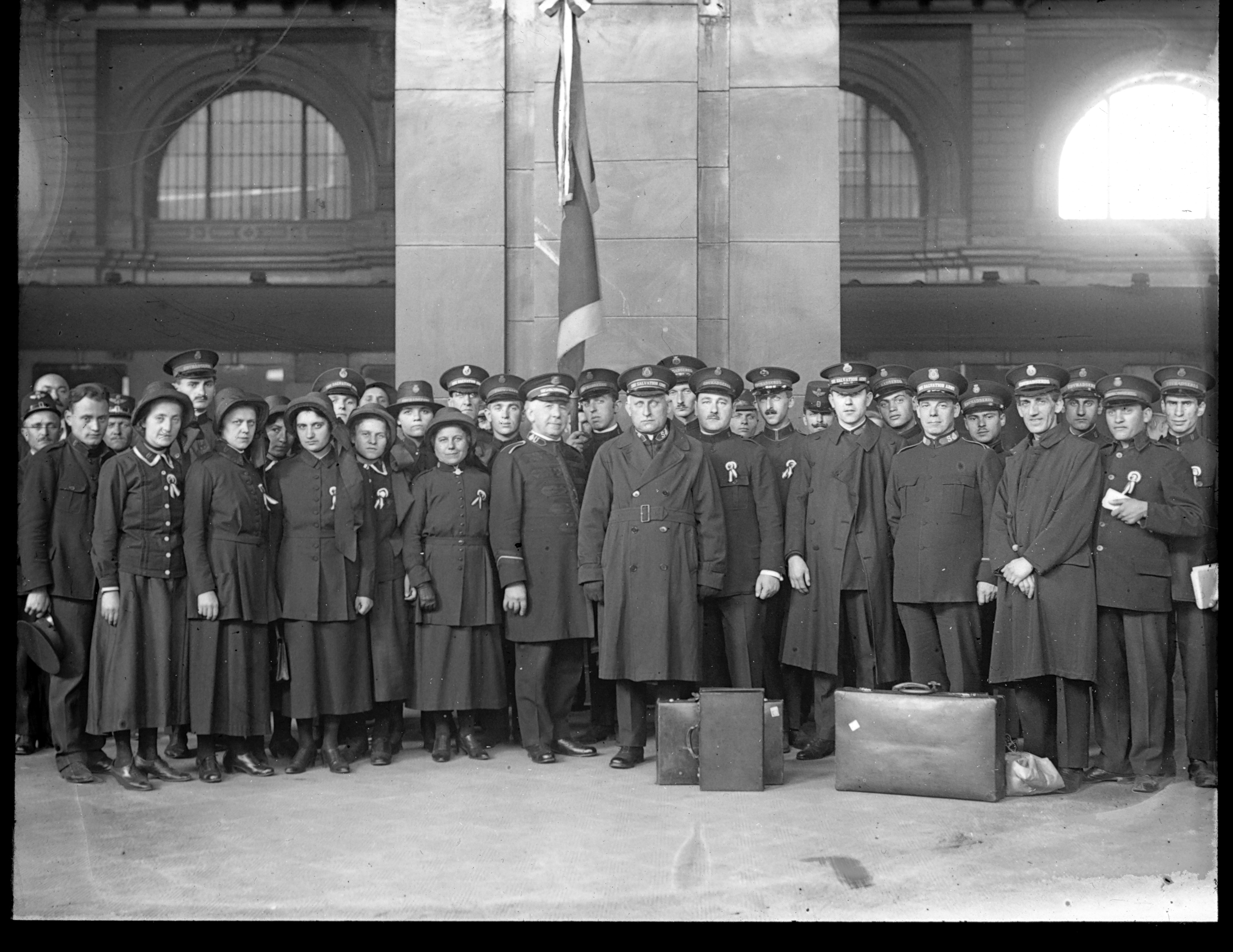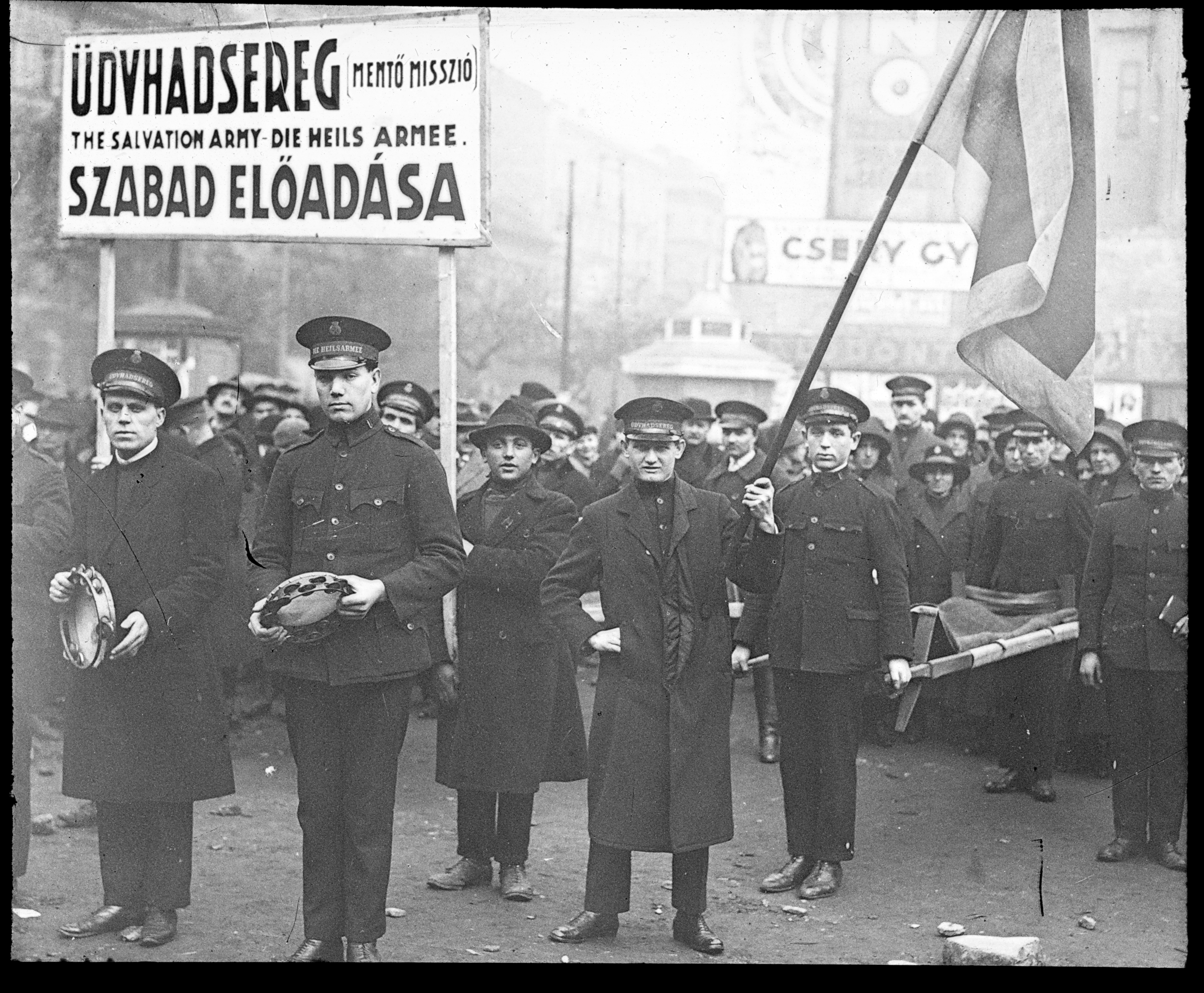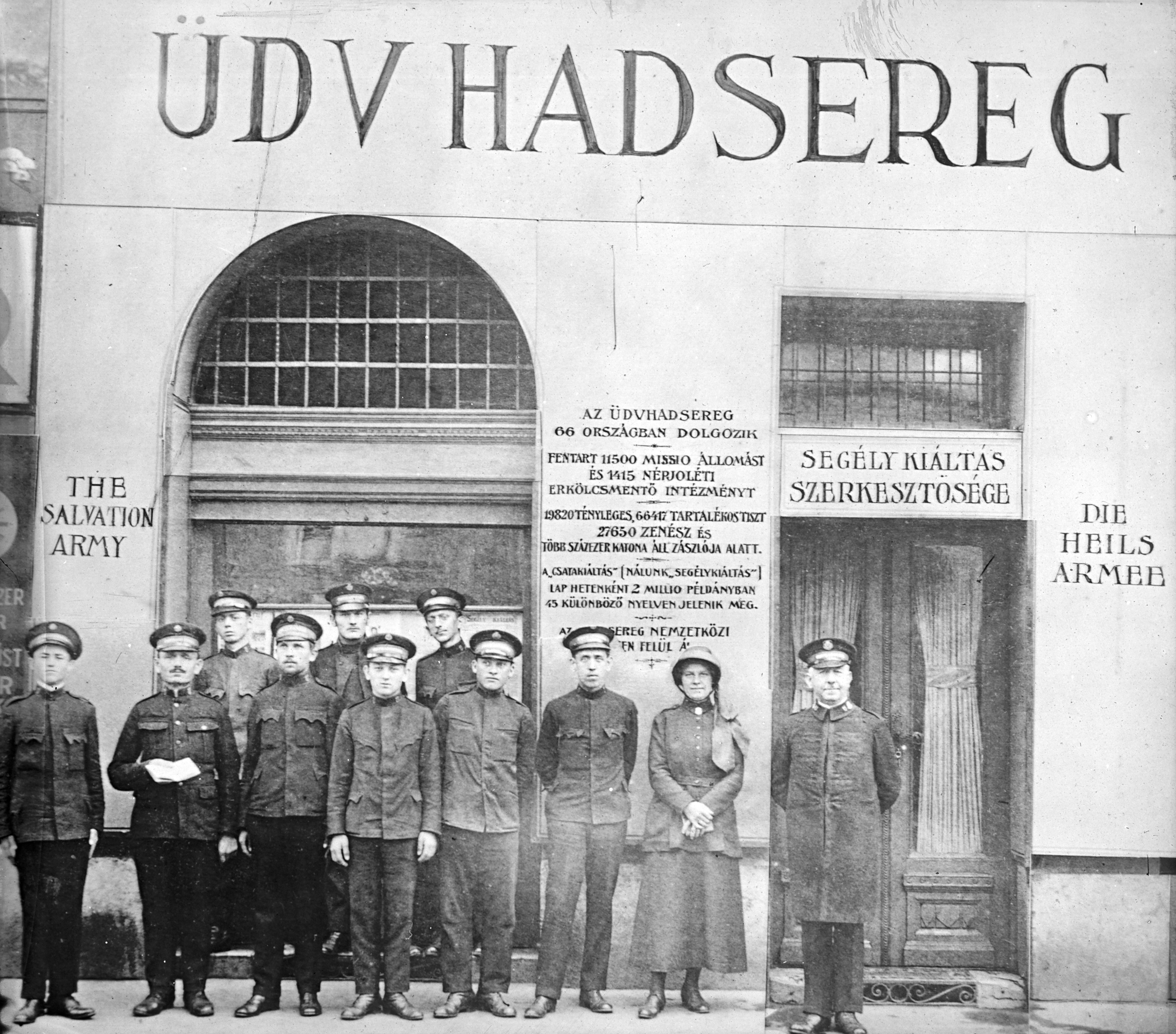History
In keeping with its calling, the Salvation Army in Hungary too, intended to create communities and assistance bases in areas where necessity is extreme, both physically and spiritually. After the work was started in 1924 attention was directed fast towards the 8th district of Budapest, which was even at that time one of the most endangered districts with a high rate of needy residents.
 In 1925 the alcohol detox centre – which today we would call a basic service provision, just like the night shelter – was opened in Prater street here in the neighbourhood. In the course of the work being done here it became clear that a hostel was needed where people could receive long-term assistance under civilised circumstances.
In 1925 the alcohol detox centre – which today we would call a basic service provision, just like the night shelter – was opened in Prater street here in the neighbourhood. In the course of the work being done here it became clear that a hostel was needed where people could receive long-term assistance under civilised circumstances.
In the spring of 1926 a couple of streets further, in 17. Szerdahelyi street a suitable property was found, but unfortunately the resources were not enough for its purchase and renovation. During this time Bramwell Booth, the then General came to visit, who was so impressed with the work being done that the IHQ in London offered the necessary finances from foreign donations and on the 5th of October 1926 the new hostel could be opened, where suitable accommodation, personal hygiene conditions and meals were ensured. Still, this building soon became too small, such was the number of people requesting shelter, that it was permanently crowded. Again there followed a period of search.
On the deed from that period documenting the ownership we can read the following:
„Proprietorship is incorporated based on the purchase contract dated 27th of June 1927 into the application registered on the 12th of June 1927 with No. 20743 in the name of Bramwell Booth, resident of London.”
 According to the Property-page at the land registry the property can be found in the capital Budapest, left of the Danube under the topographical number 35415, being a “house with a yard” at 29. Dobozi street in the 8th district.
According to the Property-page at the land registry the property can be found in the capital Budapest, left of the Danube under the topographical number 35415, being a “house with a yard” at 29. Dobozi street in the 8th district.
After the purchase, planning and execution were done quickly, which means that on the 4th of October 1927 the foundation stone was laid and on the 28th of March 1928 the new hostel named “New Hope” could be opened.
Vilmos Papp cites in his reminiscences the article of one of the most popular newspapers “The Evening(Az Est)” written about the inauguration:
“… our Hungarian society is insensitive towards any social work. The Salvation Army does something despite receiving no assistance from Society. And still, it must really be appreciated that this building is so clean, so luminous, so spacious and there is an order complying with every health requirement, that it should rather be called a clinic than a shelter. Large, clean and spacious rooms, pristinely clean beds, lavatories, bathrooms, a kitchen with a huge modern stove, and even a doctor’s and a dentist’s office are at the disposal of those 170 downtrodden, disreputable, poverty-stricken men, who get here for lack of any help…”
Work unfolded and offered efficient help to the needy.
We have at our disposal the report of 1940, from which we learn that in the men’s hostel in Dobozi street 67,072 residents turned up at the shelter that year, which means 184 residents per day. Of these, 2,252 were given free shelter and 2,034 free meals.
During WW II the number of needy kept rising, and the situation was rendered even more difficult by the fact that the salvationists were called to do military service, so that we could count on less and less helpers in this service. The mission underwent great losses on the one hand because of the fallen salvationists, on the other hand because contact with the International Headquarters ensuring financial resources was disrupted, Hungary being at war with England. The financing of shelters often became impossible, so that several corps and social institutions had to be closed down. In May the monthly “War Cry” was prohibited, thus no income was made from its sale. After the end of the war those who survived started reviving the work with great hopes, but instead years of atrocities and persecution followed. Laws influencing and limiting the work started being passed in a row, the Act No. 33 of 1947 regulated the operations of “free church communities”, the Association of Free Churches was created (from 1950 onwards named the Council of Free Churches), the nominal role of which was to represent the interests of these churches. In reality the State inte nded to direct through it the internal organisational and legal issues, and in exchange for “free” operation the churches had to conclude various contracts with the State. Due to the protests of the leaders of the Salvation Army, atrocities hindering operations became constant. In 1947 in Debrecen an illegal decision was issued by the Housing Authority based on which the building housing the corps hall and the officer’s flat in 16. Hatvan street was broken open and seized, the officer and his family, his movables were thrown out and a pub was opened in it. Thus corps halls and social institutions were lost one by one. In spite of the pressure, the leaders of the Salvation Army were not willing to sign contracts with the new state government, for which the Army was also excluded from the Council of Free Churches. In 1949 the remaining buildings also started being “nationalised” and seized.
nded to direct through it the internal organisational and legal issues, and in exchange for “free” operation the churches had to conclude various contracts with the State. Due to the protests of the leaders of the Salvation Army, atrocities hindering operations became constant. In 1947 in Debrecen an illegal decision was issued by the Housing Authority based on which the building housing the corps hall and the officer’s flat in 16. Hatvan street was broken open and seized, the officer and his family, his movables were thrown out and a pub was opened in it. Thus corps halls and social institutions were lost one by one. In spite of the pressure, the leaders of the Salvation Army were not willing to sign contracts with the new state government, for which the Army was also excluded from the Council of Free Churches. In 1949 the remaining buildings also started being “nationalised” and seized.
According to the property page of the building in Dobozi street, there were a couple of attempts to keep the property, since on the 2nd of January 1950 the transfer to the name of The Salvation Army Trustee Company (England, London, Queen Victoria Street 125.) was registered.
Despite this, based on the Act No. 4 of 1952 (March 28th) in the entire country a series of illegal seizures was started, in the course of which this and every other building where the Salvation Army had worked earlier became the property of the communist Hungarian State.
From the notes written by Vilmos Papp we know that the last meetings were held in the spring of 1952 in the last remaining building of the Central Corps Hall. Then the congregation was banned from the building and so the Hungarian ministry came to an end.



